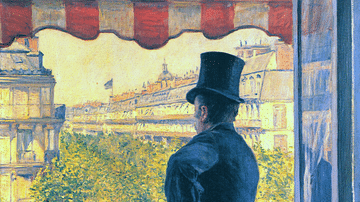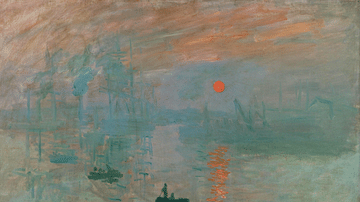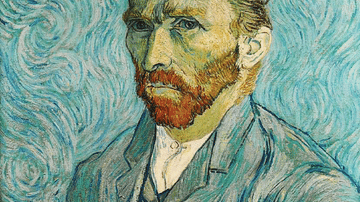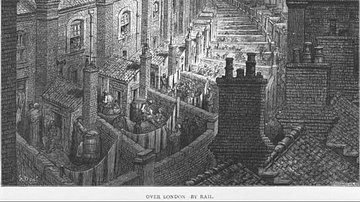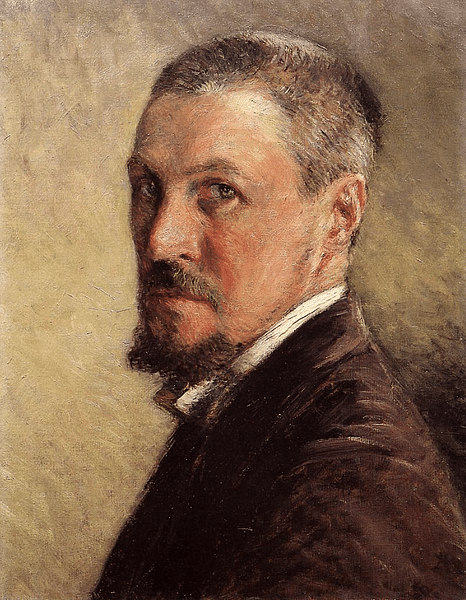
Gustave Caillebotte (1848-1894) was a French impressionist painter noted for his draughtsmanship and flair for capturing perspective. He was particularly fond of scenes showing people at balconies and admiring views, often with a rigorous geometry within the composition. Besides painting himself, Caillebotte was an important collector of art and a vital source of financial support for his fellow impressionists.
Early Life
Gustave Caillebotte was born in Paris on 19 August 1848. His family was wealthy bourgeoisie, his father the owner of a highly successful textile factory. His degree was in law but, leaving university before he completed his studies, Caillebotte was called up to serve as an officer in the Franco-Prussian War of 1870. After the war, he travelled to Scandinavia and Italy where he admired the art on public display. In 1872, he studied under the painter Léon Bonnat (1833-1922). From 1873, he studied art academically at the École des Beaux-Arts, but he wanted to pursue something different from the conservative art being endorsed by the establishment, and so he became bored with the subject in general.
Caillebotte's interest in art was revived following a chance meeting with Claude Monet (1840-1926) at Argenteuil on the Seine where the latter was regularly painting outdoors. At the First Impressionist Exhibition, held in Paris in April 1874, Caillebotte saw for himself what Monet had been describing to him: the new art movement that a group of avant-garde artists was creating. He also became acquainted with one of the movement's stars, Edgar Degas (1834-1917), and, through Monet, he was introduced to the wider group of artists causing such a stir. On top of that, in 1874 Caillebotte inherited his father's fortune, making him one of the few Parisian artists able to paint for leisure and not worry about selling his canvases. This quiet and restrained man generously used his wealth to support fellow artists, buying them materials, paying the rent when they lapsed into debt, and buying their works when very few others did.
A successful financier in his own right, the art historian S. Roe gives the following description of the young Caillebotte: "…a serious, fine-boned young man with large, deep-set eyes, [he] was reserved, sportif and very wealthy" (101). With money and talent, Caillebotte seemed to have everything, but there was one flaw in his life. Caillebotte's father's death in 1874 and, even more significantly, the untimely death of his younger brother René that same year, turned the artist's thoughts to his own mortality. Caillebotte, for some reason known only to himself, was convinced that he would die both young and suddenly. In both cases, he proved to be right. Aged just 30, Caillebotte even wrote his will, which included provisions to help independent artists organise their own exhibitions.

Impressionism
Impressionism involved the attempt to capture in paint the temporary effects of light and colour using quick and bold brushstrokes while working outdoors (en plein air). It involved a much more colourful palette than hitherto used in fine art and took nature and everyday life as its main subject rather than mythological and religious scenes. This approach was contrary to the ultra-conservative art establishment and made it very difficult for these young artists to have their work shown in the one place that could make one's reputation and bring lucrative commissions: the Paris Salon. This was why they had organised their own exhibition in 1874, even if it had not been a success in terms of the critics' reaction or sales.
Inspired by this new movement and the daring rupture of academic convention the impressionists were making, Caillebotte produced his own masterpiece in 1875, The Floor Planers. The painting was rejected by the Salon but impressed his fellow artists with its innovation and craftsmanship. The view is from an odd, low angle while the vanishing point is placed unusually at the extreme left. The lines of the floor and decorative frames on the walls create such a strong geometrical space it is almost as if the figures are working on a chessboard. The impressionists' interest in light is more subtle here but can still be seen in the reflections and colour changes of the wooden floor, backlit by the window behind.
Caillebotte's Style
Caillebotte's paintings often have a strong sense of composition, and he frequently uses a bold diagonal to draw the viewer's eyes into the scene – see, for example, The Pont de l’Europe (1876), Man at a Balcony (1880), and The Balcony, Boulevard Haussmann (1880). His brushwork is smooth and far removed from the rough and highly visible strokes often seen in the works of other impressionists. Roe describes his style as having a "crisp, architectural quality, and a uniquely urbane realism" (145).

Like Edgar Degas and Edouard Manet (1832-1883), Caillebotte's innovative impressionism lies in his choice of everyday life and the unusual framing of scenes, much like a photograph, where parts of figures, in particular, are abruptly cut off to give the illusion that the painting is a snapshot of a wider moment in time. His Paris Street, Rainy Day (1877) is a classic example of this approach – see the umbrellas partially hiding what is going on behind them – and combines with Caillebotte's love of strong lines: the central vertical axis of the lamp post that cuts the painting in two, the receding diagonals of the building to the left, and the high horizon of the street, all accentuated by the contrasting curves of the umbrellas. Such impressionists as Monet might be obviously playing with the effects of light in their work, but Caillebotte is at it, too, but in a much more subtle way. Here he captures the reflections of the people and their umbrellas on the wet road and pavement. Finally, the dominant figures approaching the viewer on the right are looking to their right at something which the viewer cannot see, again creating the illusion that this scene is only a single frame of a much wider street panorama.
Another feature of many of Caillebotte's works is an unusual viewpoint. For example, in the Rowers on the Yerres River (1877), the viewer seems to be – impossible given the precarious balance of a light skiff in water – standing in the boat itself and looking down upon the rowers. Finally, another unsettling element of Caillebotte's work, at least for contemporary art critics, was his frequent use of blue-grey tones, often made even more striking by the use of a splash of bright colour here and there in the scene (like the red and white canopy in the Man at a Balcony).

Greater Recognition
The first attempt by the impressionists to challenge the monopoly of the Salon on showing art to the public had been a disappointment, but the young artists were undeterred. Caillebotte helped organise and finance a second independent exhibition of the impressionists in 1876 – in which he had eight works displayed – and a third in 1879, which he again financed, paying the rent of a spacious apartment to be used as the gallery and for the publicity material. Gradually, though, Caillebotte, patient though he was, tired of the bickering between the artists over who should be included in such exhibitions; he especially did not get on with the divisive Degas, who had seen himself as the leader of the group.
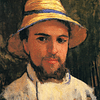
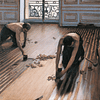
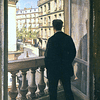

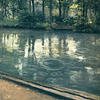
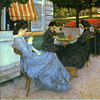
Gustave Caillebotte: A Gallery of 30 Paintings
In 1888, Caillebotte had works displayed in a major exhibition in Brussels, including his unusual male nude, Man at His Bath, a realistic scene painted in the artist's characteristically subdued tones of blue and grey. Caillebotte was now gaining the attention of the critics as an artist who successfully blended features of traditional art with a modern approach in terms of subject and framing.
Caillebotte the Collector
Caillebotte built up the first major impressionist collection by helping artist friends like Pierre-Auguste Renoir (Caillebotte was the godfather of Renoir's eldest son) and Monet (he was a witness at Monet's marriage), who frequently did not even have the money to buy the paints and canvases necessary to pursue their artistic careers. He paid Monet's rent in Paris for many months and several times saved him from eviction with a cash gift. Another recipient of regular payments from Caillebotte was Camille Pissarro (1830-1903), and he often bought the latter's paintings at generous prices.

Caillebotte bought impressionist paintings at gallery sales and exhibitions when few others were interested, deliberately buying the ones that could not sell. Knowing he was helping his less fortunate friends, Caillebotte was also aware that one day these works would have tremendous cultural value, and right from the beginning, he planned to leave his collection to the French state after his death.
He bought several sketches by Alfred Sisley (1839-1899) and Monet's Le Déjeuner (1865-6). He bought Renoir's Nude in Sunlight after the 1876 Second Impressionist Exhibition, adding to his other Renoirs which included Dance at the Moulin de la Galette. In 1884, he bought The Balcony by Manet (1832-1883), adding to a collection that represented almost all of the impressionist artists.
Other Interests
Another passion was sailing. He had long sailed yachts on the Seine near his family home at Yerres. Caillebotte financially supported certain racing clubs, and he regularly raced in regattas with his younger brother Martial, who was a pianist, composer, and keen photographer. The brothers were especially close. In 1881, Caillebotte bought a house in Petit-Gennevilliers, now a suburb of Paris, which he lived in with Martial. Besides sports like rowing, Caillebotte designed and built both skiffs and yachts. His skills with and knowledge of wood are plainly evident in his treatment of it in many of his paintings, particularly The Floor Planers and Young Man Playing the Piano (1876).

One of the period's most important philatelists, Gustave was also a keen gardener, and he regularly painted the flowers he grew in his garden and the rare and exotic species like orchids that he cultivated in his greenhouse. Ever busy, it seems, Caillebotte took an interest in local politics, becoming a member of the town council of Petit-Gennevilliers, a spell which saw him personally fund improvements to the local amenities.
Death & Legacy
Caillebotte died suddenly on 21 February 1894 when he suffered a cerebral haemorrhage. He had never married and had no children. He had had a long-time companion, Charlotte Berthier, and she was left a handsome sum in his will. Pissarro lamented, "We've just lost a sincere friend…one we can deeply mourn; he was good and generous, and what's more, a talented painter" (Bouruet Aubertot, 322). The contemporary critics had thought Caillebotte's work the most ambitious and promising of the impressionists, but his fame dimmed in the 20th century compared to names like Monet and Renoir. Perhaps his success at collecting the art of his fellows had overshadowed his own. In the 21st century, a reassessment of Caillebotte's contribution to art is underway, and he is now recognised not only for his talents but also as someone whose canvases provide a valuable record of Paris in the period in which he lived.
Caillebotte's impressive art collection numbered 96 works at his death, 67 of them were by impressionists (oil paintings and pastels). In 1896, as planned, the state was offered the collection, although it accepted only 38 of the impressionist works, and that after a controversial and lengthy negotiation process. The sticking point had been Caillebotte's condition that the works first be displayed in the Musée du Luxembourg but then moved to the Louvre following a particular artist's death (that museum did not present the works of living artists). After public pressure, which included a petition, the paintings were indeed shown in the Musée du Luxembourg and today they form part of the world's single greatest gallery of impressionist painting: the Musée d’Orsay in Paris.

